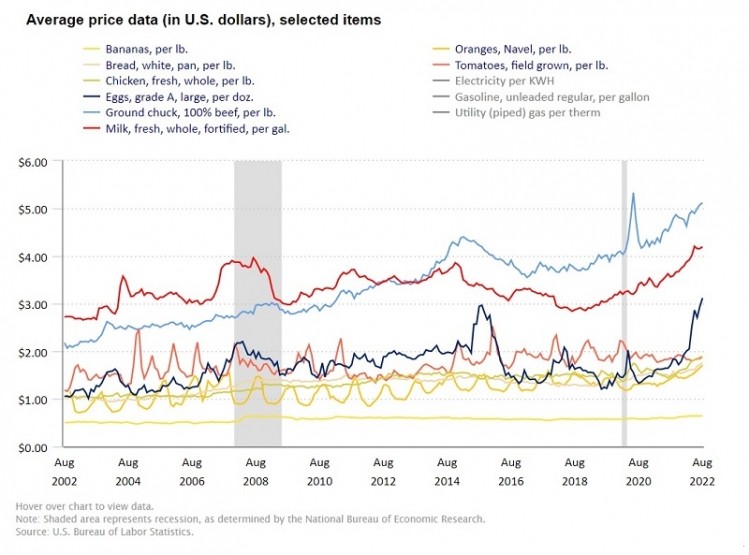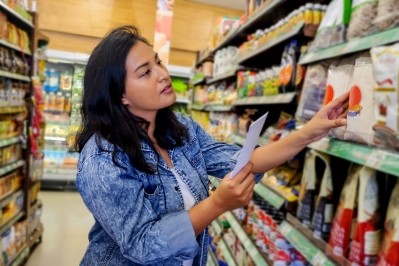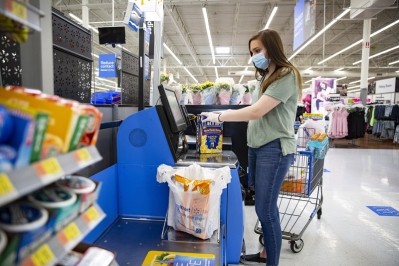Food prices climb higher into the double-digits, driving up inflation more than expected

In August, the price of food rose 0.8% over July – the smallest increase since last December, but year-over-year the 11.4% increase was the largest jump since May 1979, according to the Consumer Price Index updated Sept. 13.
The price for food-at-home rose slower (+0.7%) than that of all food (+0.8%) vs the previous month. However, year on year, food-at-home prices were up a staggering 13.5% in August 2022 vs August 2021.
The stubborn increase in food prices, combined with higher shelter and medical care service costs – up 0.7% and 0.8% in August over the previous month and 6.2% and 5.8% year-over-year, respectively – offset a dramatic drop in energy and gas prices, which fell 10.1% and 10.6% in August, respectively.
Combined, these increases drove up overall inflation more than expected, to the chagrin of policymakers and investors.
In August, inflation for all items inched up 0.1% for the month and 8.3% for the year – a disappointing revelation that suggests efforts by the Federal Reserve to stem rising costs are not as effective as they intended and more drastic action may be necessary.
The Federal Reserve is expected to raise interest rates another three-quarters of a point when it meets next week, which would be the third time it takes what was previously an unprecedented action, in an effort to further cool the economy.
The FED isn’t alone in its approach to fighting inflation, according to Craig Turner, senior commodities broker with StoneX Financial Inc, Daniels Trading Division.
“The Bank of Canada and Bank of England seem to be following the same playbook with the ECB slowly coming around, too,” he said, explaining: “Higher interest rates are necessary to get inflation under control. Higher interest rates.”
As growth slows, he added, “I think we will see more economic forecasts for recession in 2023 and less global demand for commodities.”
The higher-than-expected increase also sent stocks in the opposite direction in premarket trading on Tuesday with the S&P 500 dropping more than 3%, the Dow Jones Industrial Average falling more than 2% and the NASDAQ Composite Index tumbling more than 4% by late morning.
What is driving up food prices now?
The increase in prices for food at home came from all six major grocery store food group indexes, but predominantly from the index for cereals and bakery products, which rose 1.2% over the month.
This is notably higher than the 0.5% increase in the indexes for meats, poultry, fish and eggs as well as the fruit and vegetable index and the nonalcoholic beverage index. Dairy rose the least at 0.3% -- the smallest increase in that index since last November, according to the Labor Department.
The difference in price increases between cereals and baked goods, dairy and related products and other food at home evened out over the course of the year with each rising between 16.2% to 16.7%, according to the report. The smallest increase for the full year is fruits and vegetables, which still rose a stiff 9.4%.










